- Kenmore refrigerator water filters
- Whirlpool refrigerator water filters
- Samsung refrigerator water filters
- GE refrigerator water filters
- LG refrigerator water filters
- Frigidaire refrigerator water filters
- KitchenAid refrigerator water filters
- Maytag refrigerator water filters
- Kenmore Elite refrigerator water filters
- Estate refrigerator water filters
- GE Profile refrigerator water filters
- Amana refrigerator water filters
- Bosch refrigerator water filters
- Dacor refrigerator water filters
- Electrolux refrigerator water filters
Log splitter common questions


These common questions about log splitters are the ones our experts hear the most often from our customers. You might also find the help you need by checking the common symptoms and solutions for log splitters. When you’re ready to make a repair, search your model number for replacement parts. Sears PartsDirect has the part you need, no matter where you bought your log splitter.
Why is the hydraulic cylinder on my log splitter leaking?
A log splitter’s hydraulic cylinder leaks if the seals in the hydraulic cylinder are broken or the cylinder rod is scored. Replace the hydraulic cylinder assembly.
Why doesn’t my log splitter’s cylinder rod move?
Check the hydraulic fluid level; if the fluid level is low, the rod won't move. Replace the flexible pump coupler between the engine shaft and hydraulic if I’s worn or damaged. A defective hydraulic pump or a broken control valve also prevents the cylinder rod from moving.
Why does the wedge continue to move forward after I release the control valve handle?
The control valve directs the hydraulic fluid flow to the hydraulic cylinder to extend and retract the wedge. A leaking control valve causes the wedge to continue moving after you release the control valve handle. Replace the control valve assembly to fix this problem.
Why is hydraulic fluid leaking from around the hydraulic pump shaft of my log splitter?
A bad pump shaft seal is the usual cause when a log splitter leaks hydraulic fluid from around the pump shaft. Replace the hydraulic pump assembly.
Why does the wedge on my log splitter move slowly?
Low hydraulic fluid level can cause the log splitter’s wedge to move slowly. Fill the reservoir if necessary. Contaminated hydraulic fluid can also cause the wedge to move slowly; replace the hydraulic fluid if contaminated. Check for hydraulic fluid leaks on the cylinder, control valve and hydraulic pump, and replace any leaking component. Internal damage in the cylinder, hydraulic pump or control valve could also cause the wedge to move slowly.
Why won't the control valve handle on my log splitter snap back to the neutral position when I release it?
Hydraulic fluid that is cold or dirty prevents the control valves handle from returning to position. In temperatures below 32F, extend and retract the wedge several times to warm up the fluid before splitting logs. Replace the hydraulic fluid if it’s dirty. If the handle doesn’t return to the neutral potion from the forward position position even though the hydraulic fluid is warm and clean, replace the control valve when the control valve handle will not return to the neutral position from the forward direction.
What causes the log splitters engine to stall when the wedge begins to split the log?
A log that is too heavy will overload the hydraulic cylinder causing the engine to stall. Try splitting a different log to determine whether the log splitter is overloaded. A frozen or seized hydraulic pump can also cause the engine to stall. A blockage in the hydraulic hose or a damaged directional valve also stalls the engine.
Why is the engine on my log splitter surging?
If the engine on the log splitter is revving up and down on its own, check to see if the choke is on. The choke should only be on when starting a cold engine. Turn off the choke once the engine warms up.
Secure the spark plug wire if it’s loose.
Stale fuel or water in the fuel can cause the engine to surge. Drain the tank and fill with fresh fuel.
Replace or clean the air filter if it’s dirty.
If the carburetor isn’t adjusted properly, the engine can surge. Adjust the carburetor according to the guidelines in your owner's manual.
How fast can I drive when towing the log splitter?
Most log splitters cannot be safely towed over 45 mph. Refer to your owner's manual for towing instructions and limits.
What is the gap for the spark plug?
Many engines use a gap size of .028 to .031 in. (.7 to .8 mm). Consult your owner's manual for the spark plug gap size on your specific engine.
Most common symptoms to help you fix your log splitters
Choose a symptom to see related log splitter repairs.
Main cause: worn hydraulic cylinder seals…
Main cause: worn hydraulic valve seals around the actuator rod…
Main causes: broken pump coupler, clogged hydraulic fluid filter, bad hydraulic control valve, broken hydraulic pump, ba…
Main causes: leaky head gasket, damaged sump gasket, leaky oil drain plug, damaged fuel line, bad carburetor seals…
Main cause: worn hydraulic pump seals…
Main causes: dirty carburetor, bad spark plug, clogged air filter, stale fuel…
Main causes: dirty carburetor, stale fuel, bad spark plug, broken recoil starter…
Most common repair guides to help fix your log splitters
These step-by-step repair guides will help you safely fix what’s broken on your log splitter.
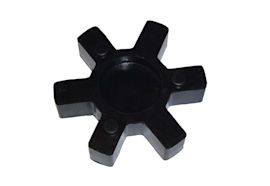
How to replace a log splitter flexible pump coupler
The flexible nylon log splitter pump coupler deteriorates over time. Replace the flexible pump coupler if it begins to v…
Repair difficulty
Time required
15 minutes or less
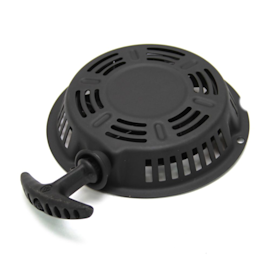
How to replace a log splitter recoil starter
The recoil starter spins the engine on the log splitter when you pull the starter rope, and the rope retracts when relea…
Repair difficulty
Time required
15 minutes or less
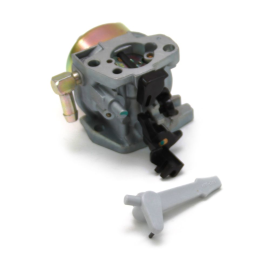
How to replace a log splitter carburetor
The carburetor mixes air and gas before the fuel mix goes to the engine. If the engine won't start and the spark plug is…
Repair difficulty
Time required
30 minutes or less
Effective articles & videos to help repair your log splitters
Use the advice and tips in these articles to get the most out of your log splitter.
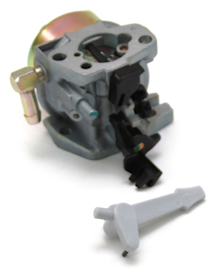
This chart will help you find the right carburetor for your Craftsman snowblower, tiller or log splitter.…
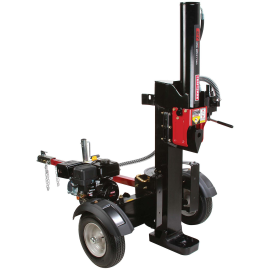
See how to properly maintain the hydraulic system in your log splitter.…
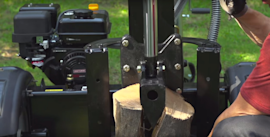
Learn how to change the hydraulic fluid in your log splitter.…